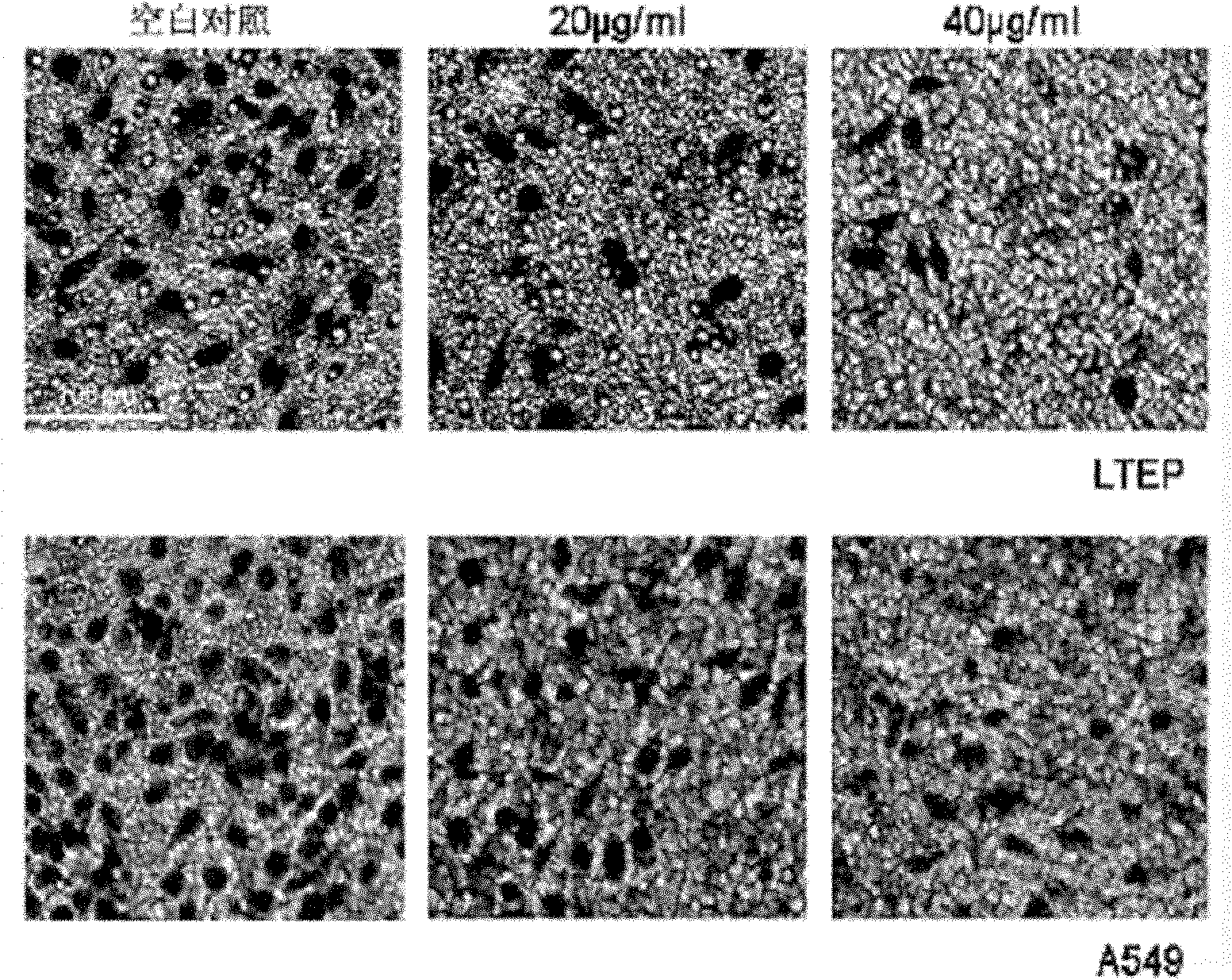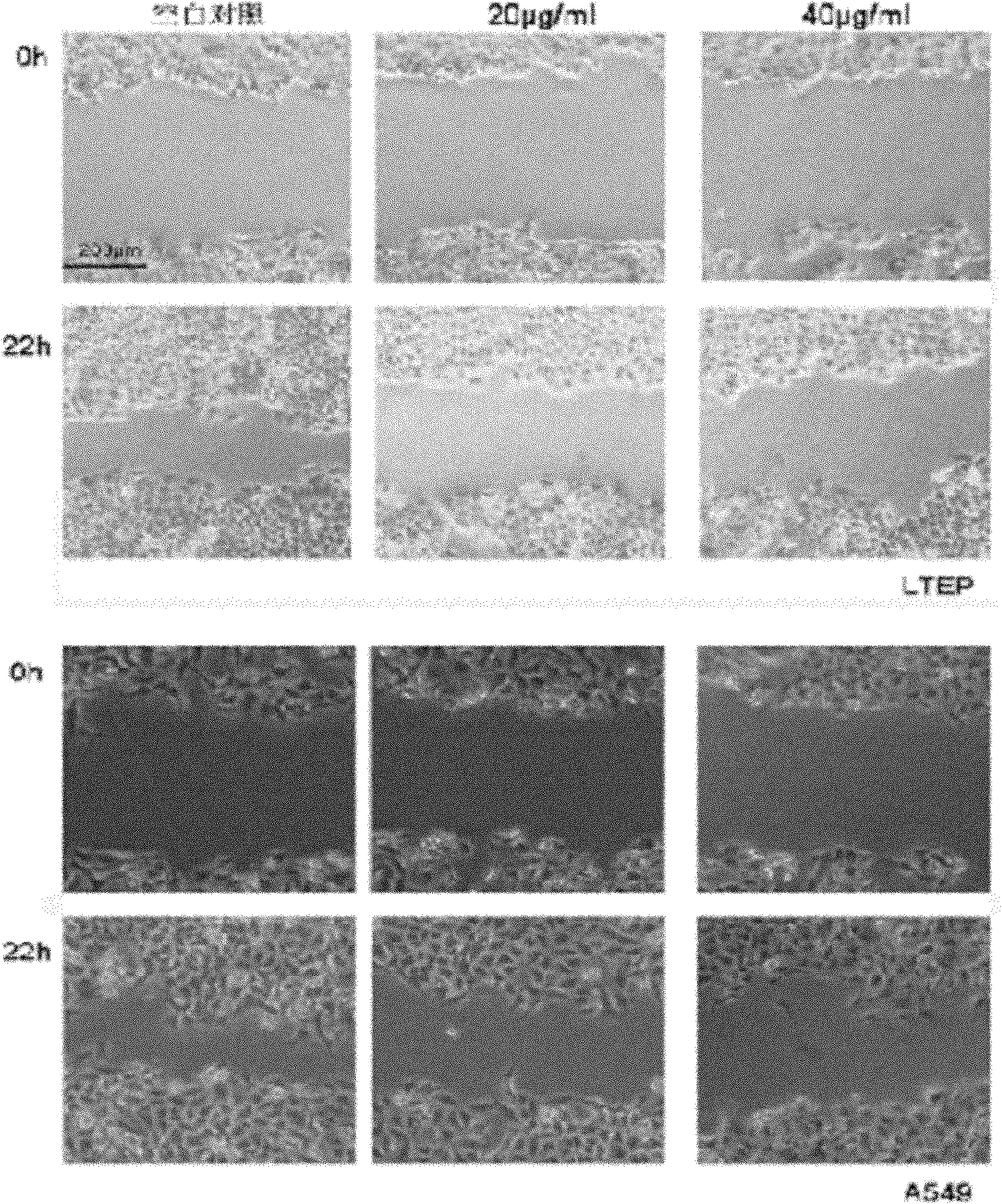Application of salvianolic acid A in preparing anti-tumor metastasis medicine
An anti-tumor metastasis, salvianolic acid technology, applied in anti-tumor drugs, drug combinations, pharmaceutical formulations, etc., can solve the problems of cell damage, patient death, inability to effectively inhibit tumor cell metastasis, etc., and achieve a good selective effect
- Summary
- Abstract
- Description
- Claims
- Application Information
AI Technical Summary
Problems solved by technology
Method used
Image
Examples
Embodiment 1
[0022] Example 1: The effect of salvianolic acid A on the proliferation of HPMEC, LTEP and A549 cells was detected by CCK-8 method.
[0023] Human lung microvascular endothelial cells HPMEC, human lung adenocarcinoma cell LTEP, and human lung adenocarcinoma cell A549 were cultured in vitro, and different concentrations (0-80 μg / ml) of salvianolic acid A were added to detect HPMEC, LTEP, and A549 cells by 24hCCK-8 method Proliferation inhibition, which shows that salvianolic acid A has a strong dose-dependent inhibitory effect on lung cancer cells LTEP and A549, but has no obvious inhibitory effect on normal cell HPMEC. The results are shown in figure 1 .
Embodiment 2
[0024] Example 2: Transwell cell migration assay was used to determine the effect of salvianolic acid A on cell migration ability.
[0025] Will 5X10 4 The A549 and LTEP cells were inoculated in the Transwell chamber and continued to culture. After the cells adhered to the wall, DMEM complete medium containing different concentrations of salvianolic acid A was added to the upper chamber, and DMEM complete medium containing 20% FBS was added to the lower chamber, and culture was continued for 24 hours. The unmigrated cells on the upper surface of the membrane were carefully wiped off with a cotton swab, and the cells that migrated to the lower surface of the membrane were fixed with 4% paraformaldehyde and stained with Giemsa. Three high-power fields of view were randomly selected to count the number of migrating cells. The experiment was repeated three times. Cell migration rate = [the average number of cells in the experimental group / the average number of cells in the bl...
Embodiment 3
[0028] Example 3: The damage repair experiment detects the effect of salvianolic acid A on the migration ability of tumor cells.
[0029] Take A549 and LTEP cells in the logarithmic growth phase, and add 5×10 cells to each well of a 24-well plate 4 After the cells grow into a single layer, draw a "one"-shaped scratch, wash with PBS, add different concentrations of salvianolic acid A to the control group and the experimental group, and take pictures. After 22 hours of culture, the same part is photographed again to measure the migration distance. The experiment was repeated 3 times, and the cell migration rate=[(0h average value of the experimental group-22h average value of the experimental group) / 0h average value of the blank control group-22h average value of the blank control group]×100%.
[0030] Salvianolic acid A inhibited the migration of LTEP and A549 cells at different concentrations (0-40 μg / ml) for 22 hours. The results showed that salvianolic acid A had a dose-depe...
PUM
 Login to View More
Login to View More Abstract
Description
Claims
Application Information
 Login to View More
Login to View More - R&D
- Intellectual Property
- Life Sciences
- Materials
- Tech Scout
- Unparalleled Data Quality
- Higher Quality Content
- 60% Fewer Hallucinations
Browse by: Latest US Patents, China's latest patents, Technical Efficacy Thesaurus, Application Domain, Technology Topic, Popular Technical Reports.
© 2025 PatSnap. All rights reserved.Legal|Privacy policy|Modern Slavery Act Transparency Statement|Sitemap|About US| Contact US: help@patsnap.com



